These Are The 6 Colors That Attract Sharks
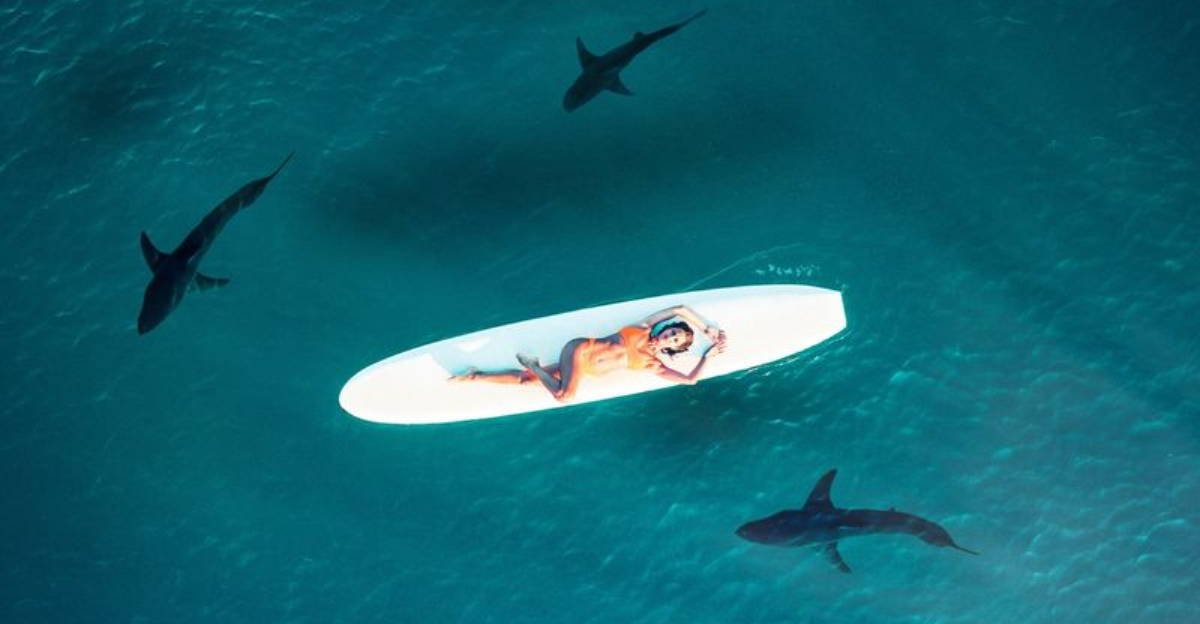
Shark attacks are rare, yet they captivate our imagination and induce a sense of fear whenever we enter the ocean’s domain.
Understanding what attracts these magnificent, yet misunderstood creatures can help us make informed decisions about our swimming attire.
Scientists have long studied the effect of colors on shark behavior, identifying certain shades that pique their interest.
In the U.S., areas like Florida’s beaches and California’s coastline are known for shark sightings, making it crucial for beachgoers to be aware of their clothing choices. So, here’s a look at colors that could potentially draw a shark’s attention.
1. Yellow
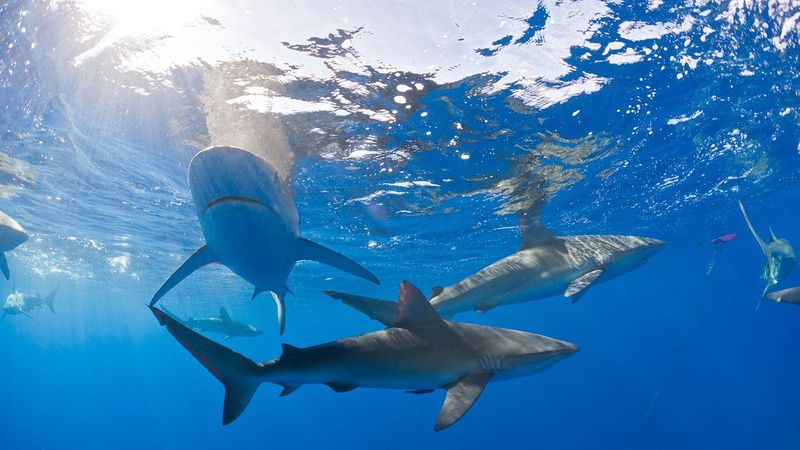
Yellow, often referred to as “yum yum yellow” in shark lore, is a color that stands out vividly against the ocean’s backdrop. Sharks, with their keen sense of vision, can easily spot this bright hue, making it a color of interest for marine biologists exploring shark behavior.
The contrast created by yellow in the deep blue sea is believed to simulate the appearance of prey, prompting a shark’s curious nature. For beach enthusiasts, especially those flocking to popular shark zones like Florida’s coasts, it’s worth considering alternative colors for swimwear and surfboards.
When yellow is paired with movement, such as paddling or swimming, it mimics prey behavior, further catching the attention of these predators. Interestingly, studies have shown that sharks are more reactive to yellow under certain lighting conditions, particularly in shallower waters.
This makes it essential for swimmers in regions with a high shark population to be cautious about their color choices. However, while yellow can attract sharks, it doesn’t necessarily mean an increased risk of attack, but awareness is always beneficial.
By selecting less conspicuous colors, beachgoers can enjoy their day at the beach with a bit more peace of mind.
2. Red
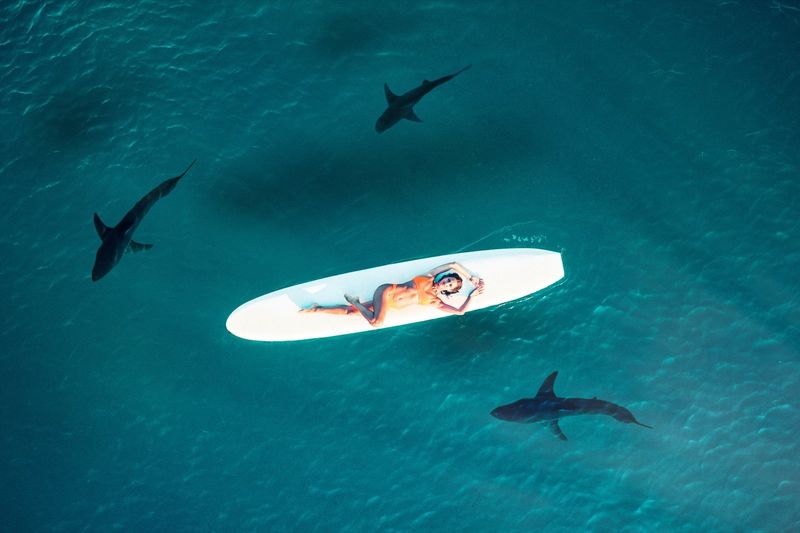
Red is another color that has drawn the attention of shark researchers. The color red can appear particularly striking in the water, especially in contrast to the natural blues and greens of the ocean. This intense hue is believed to resemble the visual signs of distress or injury among marine creatures, potentially triggering a shark’s interest.
Swimmers in areas with frequent shark activity, such as California’s beaches, might want to consider opting for more subdued colors. Red’s visibility is not only due to its bright appearance but also because of how water can augment its intensity, making it stand out more prominently underwater.
Interestingly, in deeper or murkier waters, red can lose its potency as it blends with the environment, but in clear, shallow waters, it remains a color of interest. For those looking to avoid unwanted attention from the ocean’s top predators, understanding how different shades are perceived can be vital.
While sharks are primarily guided by other senses, like smell and electroreception, vision plays a role in their interaction with potential prey or unfamiliar objects. Choosing swimwear or gear in more muted tones can help minimize visibility to sharks, offering a more relaxed experience by the sea.
3. White
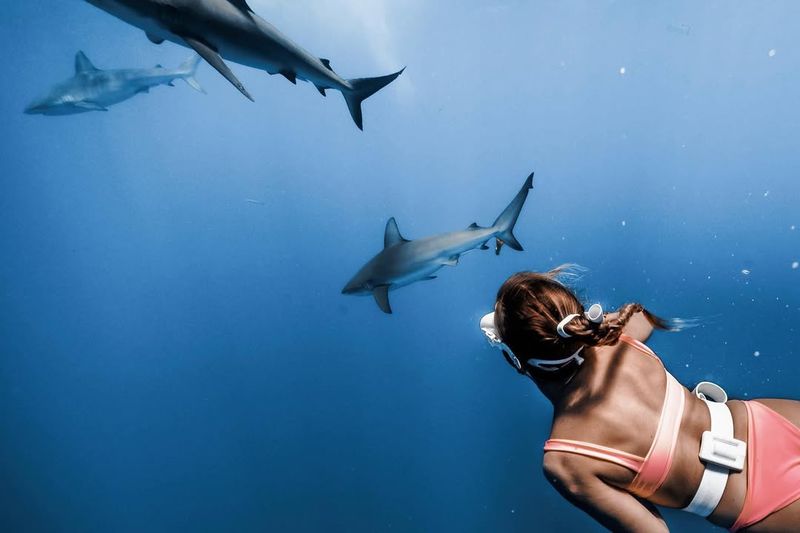
White might seem like a safe, neutral choice, but in the world of sharks, it presents a different narrative. The stark contrast of white against the ocean’s depths can mimic the underbelly of prey fish, drawing the curious eyes of a shark.
This visual appeal is particularly noted when white is the color of moving objects, such as surfboards or boats. In regions well-known for shark activities, like the Gulf Coast, this choice can be crucial for those seeking to avoid encounters.
White’s reflective properties can also play a role, as sunlight bouncing off white surfaces might give an illusion of movement or life, attracting sharks from a distance. While it may evoke images of peacefulness and purity, in the aquatic world, white can signal something entirely different.
Even though sharks rely heavily on other sensory inputs, the visual cue of a stark white shape against the ocean floor can capture their attention. For those keen on minimizing risk, blending in rather than standing out is advisable.
Opting for colors that fade into the marine environment can help swimmers and surfers alike enjoy their activities without unnecessary concern over attracting these apex predators.
4. Metallics
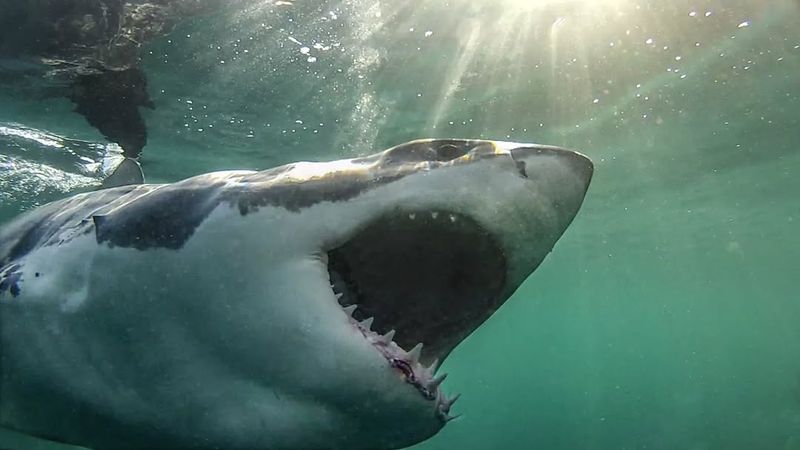
The allure of metallic colors in the ocean is akin to the glittering scales of fish, a familiar sight for a shark. Metallic hues, whether on clothing, swim caps, or accessories, can produce shiny reflections that mimic prey, stirring a shark’s interest.
This effect is heightened in sunny conditions, where light refracts off the metal surfaces, creating a shimmering spectacle. For those enjoying the waters in areas like North Carolina’s Outer Banks, a known shark hotspot, being mindful of reflective gear can be wise.
The interplay of light and metallic surfaces underwater can result in a flurry of flash-like signals, analogous to the quick movements of small fish. Sharks, drawn by this spectacle, may seek to investigate, driven by their innate predatory instincts.
While metallic colors can be eye-catching and stylish, they serve as a beacon in the marine environment, capturing more than just human attention. To avoid standing out, ocean-goers might opt for matte or less reflective finishes, ensuring their presence in the sea remains unnoticed by these inquisitive creatures.
By doing so, they can swim with more assurance, knowing they’re less likely to catch the eye of an intrigued shark.
5. Orange
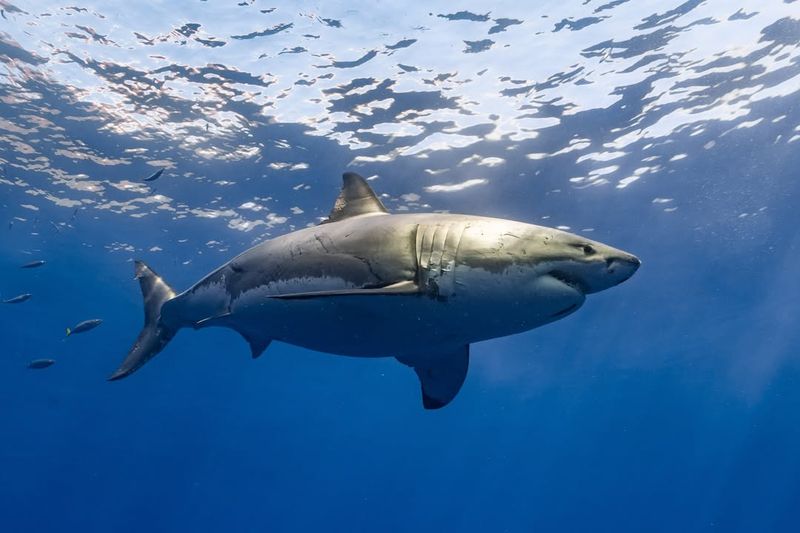
Orange is a color of caution both on land and at sea, but it carries a different connotation in the ocean realm. Known to stand out starkly against the blue hues of the ocean, orange becomes highly visible to sharks, similar to the alerting color patterns found in some marine life.
This visibility makes it a color of interest, especially when worn in high shark-traffic areas such as the waters off Long Island. The contrast between orange and the surrounding water can mimic the appearance of certain prey species or signal distress, which may intrigue sharks.
The vibrant nature of orange not only aids in human visibility for safety reasons but also enhances detection by marine creatures. For those looking to explore waters with known shark populations, reconsidering the use of orange gear could be beneficial.
The perception of orange is influenced by water clarity and depth, with brighter tones becoming more pronounced in shallower waters. While the intention behind wearing orange might be safety, understanding its potential to attract sharks can help in making informed decisions about ocean activities.
By opting for less conspicuous colors, ocean enthusiasts can enjoy their adventures with a touch more ease and confidence.
6. Neon Colors
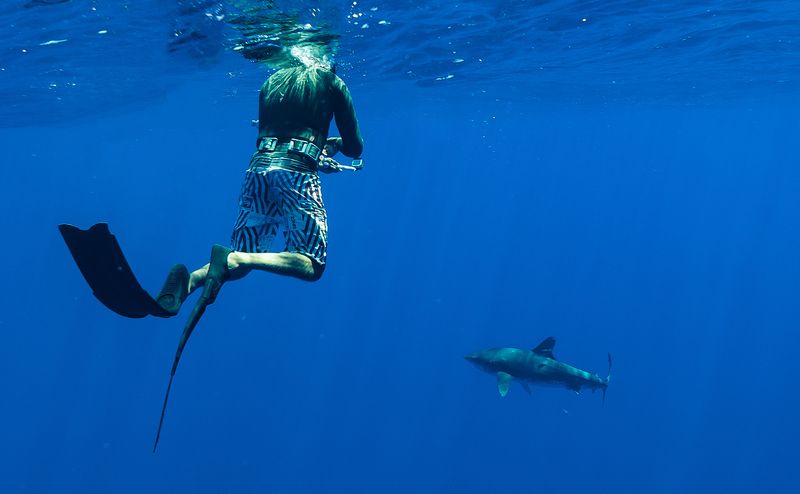
Neon colors, whether it’s green, pink, or blue, have a dazzling presence in the ocean, drawing attention from all directions, including that of sharks. The high visibility of neon shades comes from their ability to stand out against natural backgrounds, much like a beacon in the sea.
For adventurers diving into the waters around Hawaii, a region well-known for shark encounters, choosing subtler hues might be advantageous. Neon colors are not only trendy but also used for safety, making wearers more visible to humans.
However, the very trait that enhances human safety can provoke the curiosity of sharks. The vividness of neon can mimic the bioluminescence found in some marine animals, sparking interest. For those venturing into shark-prone waters, understanding the dual nature of neon visibility is crucial.
While it ensures that swimmers and surfers are easily spotted by rescue teams, it simultaneously increases their detectability to marine predators. Embracing neutral tones can help mitigate this risk, allowing for a safer, more relaxed experience in the ocean.
Balancing safety with discretion is key to enjoying the beauty of marine environments without unwanted attention from inquisitive sharks.






